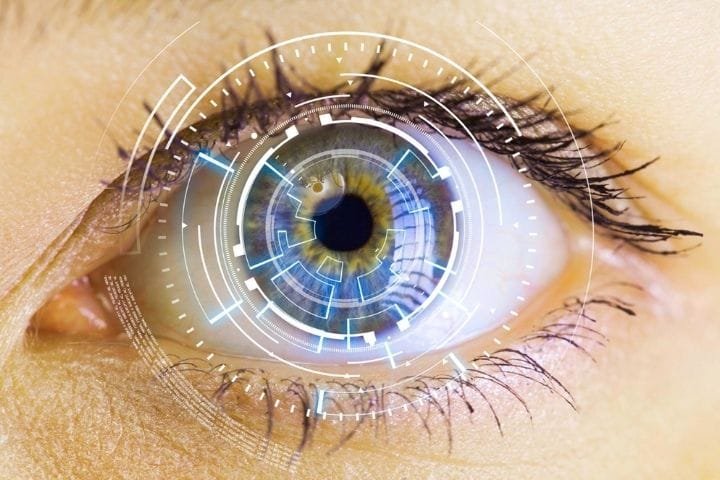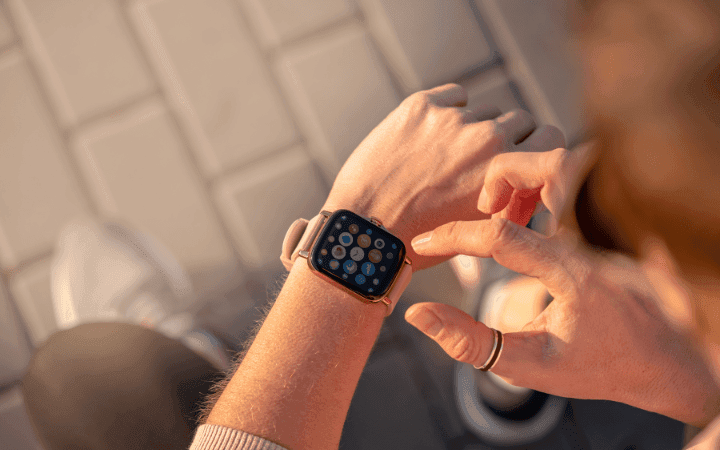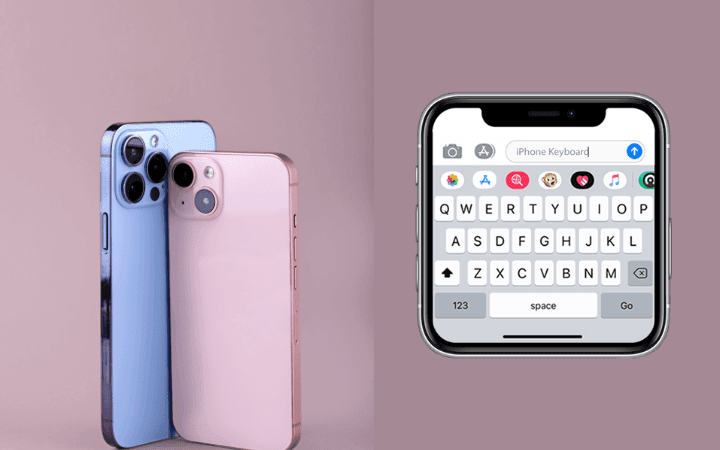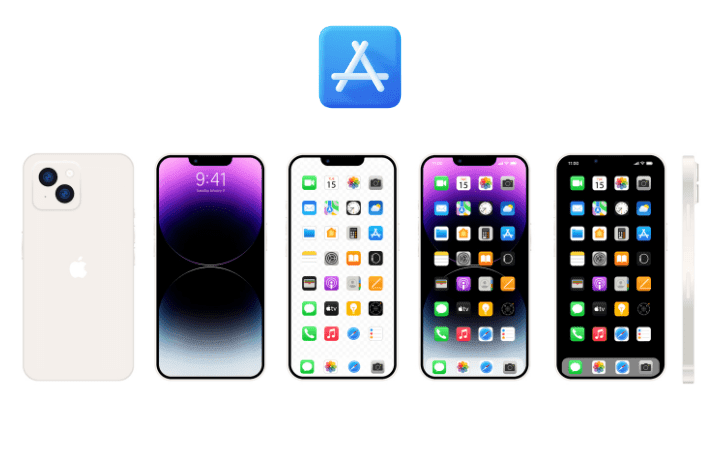What Does Eye Tracking Do?

Eye-tracking helps you to make the invisible visible. How your customers behave when browsing your website. This gives you peace of mind about what content is being read, downloaded, or overlooked. Look deep into your customers’ eyes and determine the optimization potential for your website.
How Does Eye-Tracking Work?
Eye-tracking is a qualitative market research method that analyzes people’s gaze trajectories. In so-called usability testing, eye-tracking software records the respective eye movements when viewing websites, landing pages, or product pages.
Fast eye movements (saccades), backward jumps of the eyes (regressions), and the focusing of a certain point (fixation) are measured.
What Does The Eye-Tracking Process Bring?
Eye-tracking gives you valuable information about how helpful your website and user interface are. You analyze what your audience is looking at when and for how long and can deduce how successful your content design is. The market research method provides answers to the following central questions about website and conversion optimization:
- Which side areas are strongly perceived and which hardly?
- What information do users get quickly and without cumbersome barriers?
- Why is a particular area clicked more often than another, such as B. the reference to a specific offer?
- In what order is content clicked on?
- How do different design elements affect the conversion and completion rate?
- Do graphics or long texts sustainably increase the length of stay on the page?
- Are visitors specifically directed to call-to-actions (CTAs)?
- What headlines and messages motivate people to take action?
- Which functions are performed too late or not at all?
- Which areas of the website need to be revised or repositioned?
Eye Tracking: The Advantage For Online Marketers
The visual perception of humans is very complex and differently pronounced in each person. This processes are always used when the perception of advertising videos, landing pages, flyers, online advertisements, or websites are to be analyzed. In this way, you can find out whether eye-catching banners or ads impact the viewer’s gaze or whether other content is actually of interest.
Because strong visual stimuli and contrasts do not consistently achieve the desired success, individual experiences also influence the eye movements of the test subjects in your study. Generally, people unconsciously scan their surroundings with their eyes all the time. For this reason, eye tracking is very suitable for an accurate analysis of your planned online marketing measures.
Application Scenarios
No matter how brilliantly written texts are, they still receive little attention in the wrong position on the website or in the absence of context. Usability tests for content perception are therefore a decisive success factor.
The following areas are helpful for the processes:
- Testing of differently designed newsletters, websites, or landing pages to supplement A / B testing
- Research on specific page elements to find out what users perceive
- Directing the gaze towards eye-catchers to analyze whether the expectations of the website visitors are being met
- Analysis of the focus on specific page elements
- Review of customer reactions to headers, teasers, headlines, and images
There are many different systems in place today to conduct such a study. These possibilities are widespread today and deliver reliable, resilient results:
- Eye-Tracking With Webcam: Analysis of eye movements by recognizing specific patterns and algorithms
- Mobile Eye-Tracking Systems: With tracking glasses, pupil and head movements, as well as the course of the eyes, are recorded using an algorithm
- Eye-Tracking On The Desktop: An external remote eye-tracking system uses infrared technology to detect eye movements on the monitor
- Virtual Reality Eye Tracking With 3D Glasses: The different viewing directions are recorded in a virtually generated reality
Highly developed smartphone cameras and machine learning algorithms also measure mobile phone attention under natural conditions. The camera precisely records the pupil position, regardless of where the people are.
Smartphone eye tracking is possible on Android and iOS devices, and you do not need any additional hardware to perform it. With relatively little effort, this gives you deep insights into the digital leisure time of users.
Eye-Tracking Software For Carrying Out Usability Tests
Do you know the conversion killers on your website? If not, you can quickly uncover these yourself with some eye-tracking tools. In any case, make time for tests with at least 20 test subjects. Only then will you receive meaningful data on usability.
Proven online tools for eye tracking are:
- GazeRecorder: webcam software for eye tracking, including the creation of a heat map
- RealEye: webcam eye tracking to detect conversion killers
How Is The Eye-Tracking Data Evaluated?
Depending on the system, the software displays different data. As a rule, areas that have been viewed for longer are shown in red on a so-called heat map, a thermal image, with gradations from green to yellow for little attention.
Opacity maps are the opposite of heat maps: in this case, only the areas that are not being considered are marked. Gaze plots are exceptionally detailed. They illustrate the entire course of the gaze and provide information on the sequence of the individual observations.
Here is an example: This gaze diagram from the Nielsen Norman Group shows how a participant in an eye-tracking study viewed a website in a matter of minutes. The bubbles represent fixations, i.e., places on which the subject’s eye movements rest. The size of the bladder is proportional to the duration of the focus.
Most of the time, the participant was looking at information about the injection, followed by the CTA button for more details. On the other hand, he paid little or no attention to the upper and lower menu bars.
Therefore, You Should Evaluate Eye-Tracking Data
Tracking processes help companies to understand their customers and their customer journey better. This analysis makes it easier to optimally align online platforms, advertisements, and advertising measures to customer needs. This is an essential requirement for the implementation of a high-turnover online marketing strategy.
What is decisive is the course of your gaze in the first five seconds when you visit a website. After evaluating this analysis, you can, for example, optimize your website as follows:
- Your online presence leaves a more favorable impression on users
- All relevant information is found quickly and without problems
- Website visitors no longer overlook important content
People automatically follow other people’s gaze. Use the direction in which people look at images and visual highlights to draw attention to convincing headlines, CTAs, or links. Because the model looks to the left, our gaze automatically wanders to the text. Use such tricks to emphasize your content even more.
Conclusion: It Sharpens The View For Customer Needs
With the help of eye-tracking, you can optimize the user experience of your customers based on data. Thanks to the heat map, you know the places on your website where a cancellation takes place, and you know which pieces of content are preferred to be consumed.
You can use the results to create a hierarchy of attention and direct people to your CTAs in a more targeted manner. We recommend combining eye tracking with a survey to clear up any remaining ambiguities on the user side. In this way, texts and images can be ideally tailored to the needs of your prospective customers.
Also Read: This Is How A Good Content Marketing Plan Comes Into Being






